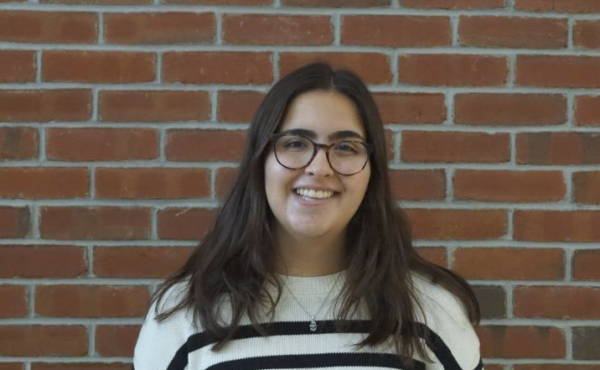Staff and students celebrate holiday traditions
January 4, 2023
The month of December can feel magical for those of all ages. The snow, unexpected days off of school and most importantly, the holidays are all reasons why people love this time of year. Students and staff at Richard Montgomery represent a wide variety of cultures and religions, meaning they take part in many different customs to celebrate their holidays.
The holiday season allows friends and family to gather in unique ways. “I enjoy how we all celebrate in our own ways, but at the same time we have things that are similar and we enjoy the season,” junior Sienna Burns said.
One holiday many people celebrate is Christmas, originally a Christian holiday commemorating the birth of Jesus Christ. Christmas is celebrated worldwide, leading to a variety of traditions based on people’s heritage.
This variety is highlighted through food eaten at Christmas celebrations. Burns enjoys eating crab cakes and mac and cheese at Christmas, while junior Emilia Souchar eats hallacas: a Venezuelan dish with cornmeal dough stuffed with different fillings. Additionally, Spanish teacher Mrs. Carmen Gonzalez’s family in Spain has red cabbage and seafood dishes, while in other regions of Spain it is common to have piglets on the table.
For some students, eating their family’s traditional dishes can be a highlight of Christmas. “The food is definitely one of my favorite parts about Christmas,” Souchar said.
Many people go to church on Christmas with their families, but many also celebrate it in a non-religious way.
Another highlight of the season is seeing Christmas lights. Additionally, because RM is so close to Washington, DC, students enjoy visiting the National Christmas Tree. Many people also decorate their house by putting lights up, decorating a christmas tree and setting up a nativity scene.
“For me, doing the nativity scene was something very very special…I loved doing that,” Sra. Gonzalez said.
Another holiday celebrated during the winter season is Hanukkah, an eight day long celebration. It commemorates the Jews’ rededication of the second temple in Jerusalem, after their oppression at the hands of the Greek-Syrians. When the Jews successfully retook the temple, they only had enough olive oil to keep the menorah’s candles burning for a day, but they miraculously burned for eight, which is regarded as the Hanukkah miracle. This is why Hanukkah is eight days long.
During every night of Hanukkah, Jewish families light candles and sing songs about the holiday. It is also very common to have friends and family over to have dinner and play games like spin the dreidel.
Because the oil burned for much longer than expected, it is customary to eat foods that are fried in oil. Junior Lianna Meklir enjoys eating latkes, which are potato pancakes with sour cream or applesauce. It is also common for people to eat chocolate coins and sufganiyot, which are jelly donuts.
Although Hanukkah is one of the most well-known Jewish holidays, it is not necessarily the most important. “A lot of people who don’t celebrate Hanukkah think it’s more important to our religion than it actually is…we have holidays that are a lot more important,” Meklir said.
Traditionally, it was common to exchange money during Hanukkah. But as time has gone on and more Jewish people migrated to America, it has become more common to exchange gifts instead. This may be due to the Christmas custom to receive gifts from Santa. Each practice depends on each family and their own traditions.
Another holiday celebrated is Kwanzaa, a non-religious holiday celebrated by African Americans to celebrate their African heritage. It is celebrated from Dec. 26 to Jan. 1, where each day is dedicated to one of seven principles of Kwanzaa: unity, self-determination, collective responsibility, cooperative economics, purpose, creativity and faith.
During Kwanzaa, people receive zawadi, or gifts meant to embody the principle of the night it’s given. Gifts given on Kwanzaa are usually homemade and are supposed to be given with intention.
Because Kwanzaa is a holiday meant to highlight African heritage, people eat dishes originating in Black, Caribbean and African cuisine. Thus, many people eat foods like plantains, oxtail, gumbo, jollof rice and more. Many of these foods are eaten throughout the holiday, but there is also a big feast eaten on Dec. 31 when people gather with their families.
Although everyone celebrates different holidays and has distinct customs and traditions, all events bring friends and family together. “There is something about the end of the year that makes people slow down, reflect and think about what’s important to them,” English teacher Mr. Grant Goldstein said.



